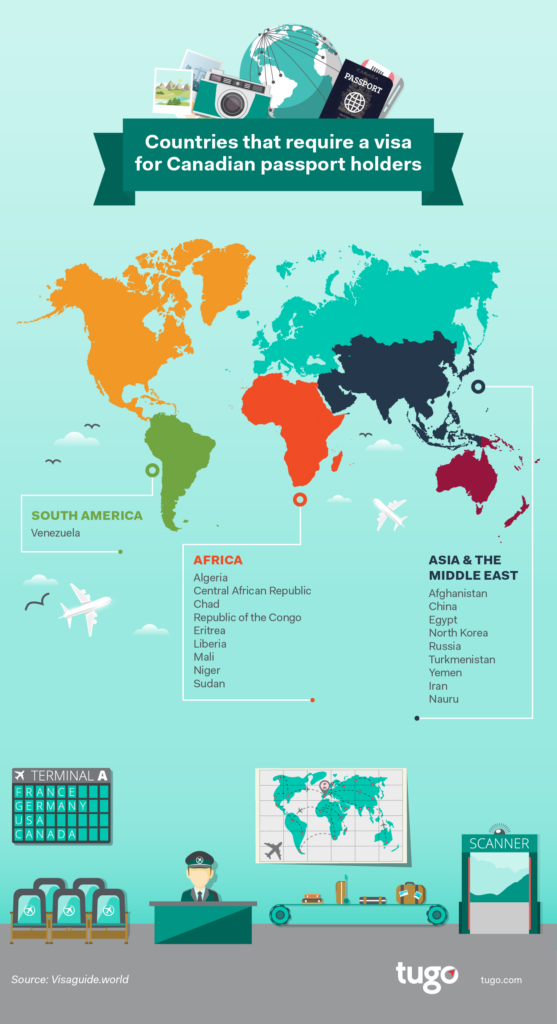Did you know that the Canadian passport is ranked the 7th strongest in the world? As Canadians, we’re pretty lucky that we get to travel to so many countries without the need for a visa, including Austria, Belgium, Greece, Japan, and many more.
That then begs the question—which countries require visas for Canadian passport holders? What is a visa exactly, and what’s the difference between a visa and an eVisa? If you’re interested in finding out. then this blog is perfect for you.

What’s a visa?
A visa is an official authorization stamped on a passport that allows travellers to enter, stay in, or leave a foreign country for a designated period. Visas are typically issued by the government or consulate of the destination country.
Various types of visas include:
- Tourist visa – for leisure travel and sightseeing.
- Work visa – for employment in another country.
- Student visa – for studying abroad at an educational institution.
- Transit visa – for passing through a country on the way to another destination.
- Business visa – for attending meetings, conferences, or conducting short-term business activities.
Visas often specify the duration of stay, whether single or multiple entries are allowed, and other conditions. Some countries require pre-approval for a visa, while others issue visas upon arrival or have agreements that permit visa-free travel for certain nationalities.

What’s an eVisa, visa on arrival, and Electronic Travel Authorization?
An eVisa (electronic visa) is a digital alternative to a traditional visa, allowing travellers to apply for and obtain a visa online without the need to visit an embassy or consulate in person. The entire process, from application to approval, is conducted electronically. Application and approval time varies by country, so be sure to check ahead of time!
A visa on arrival (VoA) is a type of visa that travellers can acquire upon reaching their destination country, eliminating the need to apply in advance at an embassy or consulate. Upon arrival at the airport or border, travellers complete a visa application, pay the applicable fee, and receive the visa directly from immigration officials.
An Electronic Travel Authorization (ETA) is an entry requirement for travellers who do not need a visa to enter a country but still need pre-authorization before their trip. The ETA is linked electronically to the traveller’s passport and grants permission to travel to the destination country, usually for short stays, such as for tourism, business, or transit.

As you can see, while Canadian passport holders enjoy access to many countries without needing a visa, there are still destinations that require either a visa, eVisa, visa on arrival, or Electronic Travel Authorization.

Understanding the differences between these travel documents and knowing the specific requirements for your destination is crucial for smooth, hassle-free travel. You should also know that medical billing works differently abroad and your provincial healthcare can’t cover most of your emergency medical costs. To avoid out-of-pocked medical costs, it’s a good idea to invest in an all-inclusive travel insurance when you’re travelling.
Safe travels,
Suki
